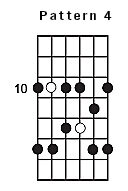Today the music world has no rules.
Artists have the freedom to create and mix any form of music they can imagine. Music has reached the point where artists have the independence to create new categories of music by mixing rhythms and genres.
However, creating music still comes with its stages, dos and dont’s. In order to make good music that people will enjoy listening to, you still need to follow stages of music production that have been perfected over the years by professionals.
Like a chef in the kitchen, just because you have unlimited ingredients and tools to play with does not mean you should. There are some things when you mix and match that just don’t taste good.
On that note, check out Jony Studios’ mixing and mastering services that will help you elevate your sound and bring your song to life!
After arranging comes tracking:
WHAT IS TRACKING?
Tracking is referred to here as the instrument recording process. Since this process has many names, we’ll stick to calling it “tracking”.
A song is basically an idea flowing around until it is made tangible. And making a song tangible means recording it. You could play your song live but it wouldn’t be tangible since the song would disappear after it ends. The recording process is what captures the song in a format that lives on forever. This is what makes the song tangible and gives the listeners the ability to listen continuously without the song disappearing.
In simple terms, it is the process of recording various instruments used within a song. Multi-track recording, on the other hand, is the process where when you record a new track, you hear all the other tracks recorded as well. This multi-track recording process is used when the tracks are recorded one at a time.
HOW IS IT DIFFERENT FROM SONGWRITING?
Songwriting requires a different kind of focus. With writing, you want to experiment which is only possible when your mind is free of all new associations and connections.
However, when it comes to performing a song, your focus needs to be on playing with the right feeling and in time.
But remember: while recording you don’t have to get it perfect. There are many editing options that can fix mistakes and improve a song but there is a limit to what you can edit. Editing too much can make your song sound unnatural.
Need help with recording your music or editing your songs? Contact Jony Studios.
Combining the writing and performing/tracking stages of music production will greatly impact your song quality. In order to ensure the best possible outcome, focus on each individual step separately.
Conclusion
Tracking is an essential step in the music creation process. It allows you to record each instrument used in a full complete song. Without it you wouldn’t be able to record.
Still unsure of this step?
Jony Studios’ offers music production services that will help you elevate your sound and bring your song to life!
Contact us here to get started.
- By Neha Agarwala
Curious about the other stages of music production?
Check out these blogs to learn more:



















